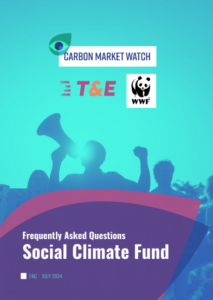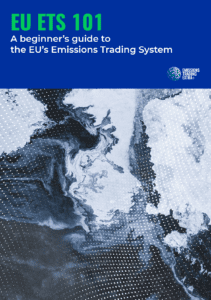Executive Summary
Around the world, governments are establishing carbon pricing systems to put a price-tag on greenhouse gas emissions and incentivize more climate friendly practices. The EU launched its own Emissions Trading System (EU ETS) in 2005.
While the ETS is a necessary instrument to decarbonise the power and industry sectors in Europe, experience shows that alone it is not sufficient. For a realistic chance to transition to a net-zero economy, a package of policies beyond
and in addition to the ETS is required for the following main reasons:
1. Carbon pricing alone cannot overcome market barriers and imperfections such as split incentives between tenants and house owners, imperfect information and dynamic inefficiencies.
2. The purpose of the EU ETS to cut carbon emissions does not address other policy objectives such as energy security, affordability, and air quality.
3. The current ETS prices are simply too low to meet the Paris climate goals and could lock-in high-carbon infrastructure in the absence of a swift response with additional policies and measures.
Carbon pricing is just one instrument in the toolbox to limit greenhouse gas emissions. It needs to be complemented by energy efficiency measures to overcome market imperfections, by renewable policies to bring forward new mitigation
options, and by direct regulation to avoid the lock-in of high emissions infrastructure. Since the interaction between the EU ETS and energy policies is unavoidable, a key question is how to guarantee that the elements of a complementary policy package mutually reinforce each other.
Poor policy integration can have a number of drawbacks: It can undermine energy security and affordability, result in investment uncertainty, increase the risk of stranded assets and affect the performance of renewable and energy policies. Climate objectives can also be undermined if the uptake of energy policies that save greenhouse gas emissions result in a weaker carbon price and thereby reduce the incentive to shift to cleaner production and consumption.
To implement the Paris Agreement, the EU is currently finalising its 2030 climate and energy framework, which includes a reform of the EU ETS as well as the Clean Energy Package to stimulate the uptake of energy efficiency and renewable energy. Improving synergies between these elements is required to ensure they work hand-in-hand for more climate ambition in line with the Paris climate goals.




